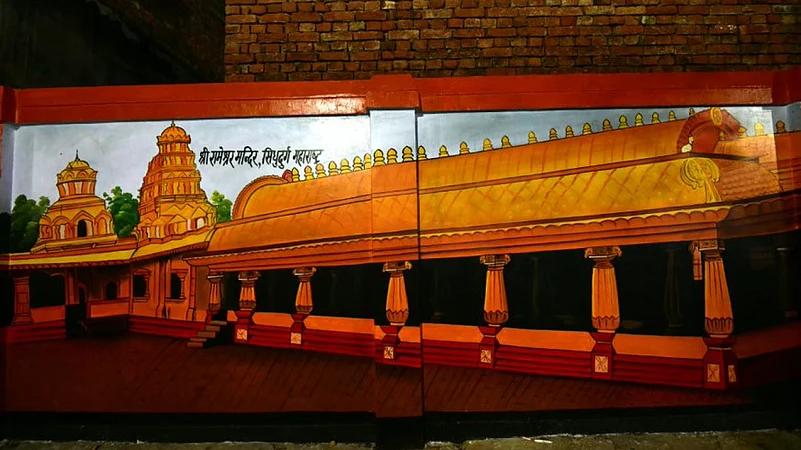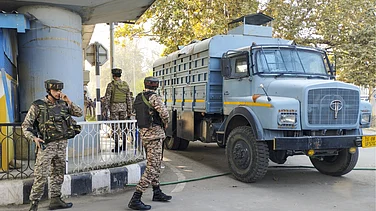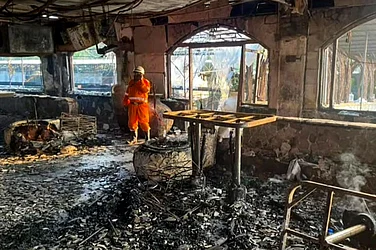The slogan “Gorakhpur me rehna hai to Yogi-Yogi kehna hai” (If you want to stay in Gorakhpur, you need to chant Yogi’s name) began to be thrown around in the early years of the 21st century. Later this was widened to include the entire Purvanchal (Eastern Uttar Pradesh) and subsequently the whole state, but one has to go into a flashback to understand this development, how things reached where they are. This was a time when the BJP was not a “Modi-Shah” enterprise and instead, Vajpayee and Advani ruled the roost. Vajpayee was considered relatively secular and liberal, but it was the man himself who gave this slogan in 2004 while campaigning for Yogi Adityanath in the Maharajganj district of Purvanchal during the general elections. The slogan not just established Yogi in the region and Uttar Pradesh but gave legitimacy to all sorts of activities by him. Now, a powerful Adityanath is ready to knock on Delhi’s door, if Gorakhpur helps him retain power in Lucknow.
Gorakhpur is home to the Goraksha-Peeth, the religious institution established by Guru Gorakhnath, founder of the Nath sect. Gorakhnath was named by Osho as one of the four stars that light up India’s religious horizon, carrying forward the legacy of Krishna, Patanjali and Buddha. Rajneesh called the man one of the four spiritual directions. However, the beliefs of those who carry forward Gorakhnath’s name have changed a lot over time. Gorakhnath is believed to have said, “Koi vadi, koi vivaadi, jogi ko vaad na karna,” (if there’s a fight, a yogi or saint should steer clear of it). However, controversies have followed Yogi Adityanath, the chief minister of India’s largest state, like a shadow. Although he has represented Gorakhpur as its member of parliament since 1998, Adityanath’s current powerful stature dates back to 2017, when the BJP received a landslide majority in the state. All the predictions and mystery surrounding the CM face were put aside when the mahant (head priest) of the Goraksha-peeth was handed the seat of power in Lucknow. The colour saffron gradually took over the CM office and other parts of the public sphere, and Yogi’s stature grew manifold. Even though Hindutva politics got a shot in the arm through Yogi’s ascendency, today hardly anyone talks about how this goes against the basic tenets of the Nath sect.
Yogi has narrated in the assembly, how he told reporters that he is a Hindu and does not celebrate Eid, that he is proud of his Hindu traditions and culture, even though if someone celebrates Eid ‘peacefully,’ the government will help them. This is a clear message to his current or possible voters. You can also read this writing on the wall while walking around in Gorakhpur: just outside the railway station, the food joints are divided along religious lines, as the Sonu Hindu Bhojanalaya stands next to Taha Muslim Hotel. Similarly, a Jagadamba Hindu Hotel shares walls with the Nice Muslim Hotel. Yogi began his name-changing spree by changing the names of several areas of Gorakhpur while being its MP. Miya Nagar was renamed Maya Nagar, Urdu Bazar dubbed Hindi Bazar and Ali Nagar was rechristened as Arya Nagar. So name-changing was not a new hobby that Adityanath acquired with the chief-ministership, although it made the headlines when Faizabad was officially renamed as Ayodhya and Allahabad as Prayagraj. He was continuing a long-standing project when he laid the foundation stone for a university in Azamgarh in November 2021 and said: “There should be no doubt that this university will convert Azamgarh into Aryamgarh in the real sense.” The man has always been clear about this stance.
On the politics of name-change, 60-year-old Krishna Kant Varman, a homoeopath who runs a clinic in Gorakhpur’s Maya Bazar (east), says that this isn’t the only neighbourhood whose name has been changed. He supports the decision and says “Names should be changed because they are our identity and symbolize our culture.” His clinic’s signboard also says Maya Bazar, despite appearing quite old. Next to it, there is another antique board saying ‘M. Taz Tailors,’ but this time the address is ‘Miya Bazar,” Kotwali Road. The owner of the tailoring shop, Tajuddin, says that those who have power always impose their names, but in daily usage and records, the old name of the locality survives. “Everyone brings development, of different kinds,” he says. The editor of the news website Gorakhpur Newsline, Manoj Kumar Singh, says that the project of changing the names of colonies and markets in Gorakhpur did not appear out of the blue. “Gorakhpur has been a laboratory of Hindutva politics for a long time. Former mahant and MP Digvijaynath used to say that if Hindu Mahasabha comes to power, we will take away the Muslims’ right to vote for 5-10 years until they prove their loyalty towards India.” Although the Mahasabha could never gain power in the state, Digvijaynath was elected only once in 1967 and died before his term ended. After him, Mahant Avaidyanath was elected as MP and became one of the prominent faces of the Ram Janmabhoomi Movement.
Even if Yogi Adithyanath appears an extension of Digvijaynath’s legacy, he cannot claim to be a carrier of Gorakhnath’s tradition, because the latter went beyond the debate of temple versus mosque and said:
“Hindu dhyave dehura Musalman maseet
Jogi dhyawe parampad, jahan dehura na maseet,
Hindu dhyave Ram ko, Musalman akhai Khudai
Jogi akhai alakh ko, tahaN Ram achai na Khudai”
(Hindus pray in the temple and Muslims in the mosque, but Yogis pray to the abstract Brahma without visiting places of worship. Hindus call out to Ram and Muslims to Khuda, but Yogis call out to the invisible Brahma, they do not chant after Ram or Khuda).
When Yogi Adityanath talks of being a proud Hindu and not celebrating Eid, and his followers say we should support someone who re-established Ram in his place, the hypocrisy leaves one speechless. He is also the first chief minister in the country who brought an ordinance against “Love Jihad” in November 2020, and has been running his own militia-like group Hindu Yuva Vahini before he assumed office, despite subsequently trying to distance himself from it. When Gorakhpur votes on Thursday with Yogi as a strong contender, it will be perhaps the most prestigious contest for BJP in this election.



























